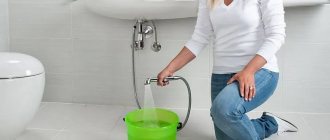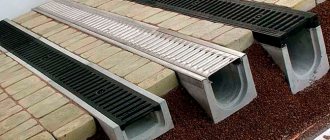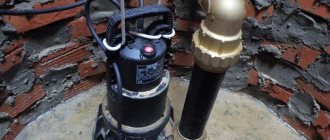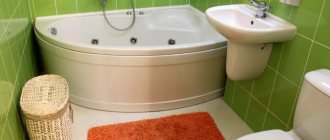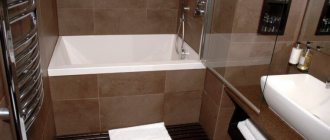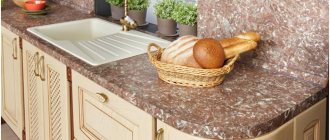It’s easy to apply, inexpensive, and masks surface defects well—it’s not for nothing that self-leveling acrylic for bathtubs is so popular. You can carry out restoration work yourself and without the use of special tools. After hardening, the mixture is characterized by high strength and durability.
We'll cover how to find the best polymer blend. We'll tell you which market offer will be most suitable. Let's look at the assortment and see what parameters you need to pay attention to when choosing this material.
What is acrylic mixture
The technology for resurfacing plumbing fixtures appeared about 20 years ago. For this, liquid acrylic is used, which is applied to the plumbing fixtures and left for some time to harden. The result is a shiny and smooth coating that is highly durable and resistant to damage. This product can be used for both steel and plastic bathtubs. You can also coat cast iron products with acrylic. The surface layer has a long service life and perfectly hides minor defects.
Applying acrylic to a bathtub Source vitrum-novo.ru
Comparison
We decided to analyze information on the three most popular types of liquid acrylic and answer several questions at once, which is better:
- stakryl or liquid acrylic luxury?
- stakryl or plastol?
- plastol or ecovanna?
To do this, we will analyze consumer reviews and our own practical experience.
What people say:
the ratio of the number of negative reviews to the total number of reviews containing an indication of the acrylic brand.
According to information from the review site irrecomended.ru stakryl – 24% plastol – 18% Ecovanna – 11%
According to reviews on the website otzovik.ru eco-woven – 19% plastol – 4% stakryl – 12%
Taking into account the statistics of these sites, it is worth making allowances for the fact that (according to research by the international marketing company Nielsen) people are more willing to write negative reviews, and if everything is in order, they remain silent. It is worth understanding that negative reviews in this case are caused not by the properties of the material, but by the work of the master - that is, the final result, which does not depend on the characteristics of acrylic. This may well mean that an unscrupulous company is working with good material. Therefore, below we present our own practical data.
What practice shows:
To obtain more reliable statistics, we counted the number of justified warranty claims over 8 years of work that were not related to the technician’s errors (sample of 20,254 clients*).
Number of warranty claims:
- stacryl – 0.7%
- plastol – 0.3%
- ecovanna – 0.5%
*The data given is subjective and is not a reliable basis for determining the quality of the material.
Advantages and disadvantages
Self-leveling acrylic has many positive characteristics:
- The surface retains its temperature for a long time;
- There is no slipping;
- The coating is pleasant to touch;
- It is possible to color the mixture before application;
- The acrylic layer lasts a long time and resists wear well;
- The surface is resistant to constant loads;
- Whiteness lasts for a long time, it is easy to maintain the shade;
- Easy product care;
- Safety for health and the environment;
- Possibility of using chemicals;
- Long-term preservation of initial characteristics;
- Protects plumbing fixtures from the proliferation of pathogenic microorganisms and also prevents the formation of fungus;
- Possibility to repeat application of acrylic depending on need.
Bath before and after restoration Source beristroy.ru
In addition to its advantages, the product also has some disadvantages:
- It takes a long time to dry, this process can occur over several days;
- The likelihood of dust and debris sticking, which can affect the final result;
- Do not use aggressive chemicals or abrasive substances to care for the surface.
Restoring the bathtub cover Source gidpokraske.ru
What does this mean?
The difference in the quality of the products of these three manufacturers is so insignificant that it can be neglected. There are certain differences in the chemical composition and technical characteristics, that is, in the behavior of the mixture when applied. For example, ecovanna hardens faster during application than plastol. But this information is important only for the master, because the nuances of the work process depend on it.
The factor that really determines the final quality of the restoration is the professionalism of the master, and not the material (unless you use defective or counterfeit material).
Types and manufacturers
There are a large number of products on the market that differ in their properties and composition. Manufacturers include various ingredients in their products that affect the color of the coating and its method of application. Typically, an acrylic mixture consists of a base and a hardener, which are mixed before use. The instructions also indicate exactly how to prepare the solution, as well as how to apply it to the plumbing.
Acrylic bathtub surface Source stroy-podskazka.ru
The following types of acrylic are most widespread among users:
- Glasscryl. This is the very first product created to restore the surface of bathtubs and other plumbing fixtures. It has a heterogeneous consistency and a special structure that does not respond well to the use of solvents. The mixture comes in a white shade, but it is possible to add another color in the form of a special tint. This type of acrylic is very reliable, it can withstand significant loads without damage. The service life of the surface is several years. Among the disadvantages of the product are not very convenient application, as well as long drying and unpleasant odors during operation.
Acrylic mixture Stacryl Source stacril.com.ua
TOP 7 best offers for self-leveling acrylic
Bulk or liquid acrylic is a group of substances that are intended for the restoration of bathtubs using a specific method. The method of restoring the attractive appearance of the container involves mechanically cleaning the surface, degreasing, drying and applying (pouring) the composition.
The self-leveling acrylic kit includes a base and hardener. The standard shade is white or colorless. If necessary, the mixture can be tinted. The main advantage of the technique is its cost. Self-restoration costs 15-20% of the price of new plumbing.
If the estimate includes the services of a bathtub painting specialist, the amount will be about a third of the cost of purchasing and delivering the bathtub. The rating includes acrylic from different manufacturers. They differ in price, composition, and features of use. Let's take a closer look at popular brands of acrylic.
The polymer can not only paint over the walls of the bathtub, but also flow into pores and scratches, making the surface even and smooth.
Place #1 - FINNACRYL-24
Used to restore cast iron plumbing fixtures and metal bathtubs. The coating is glossy and smooth. The pot life of the material after mixing the components is 60 minutes. If the composition is not used within the specified time, it will be unusable.
In addition to the basic set, you can purchase blue, green, yellow, brown, red, burgundy, purple colors or buy ready-made color mixtures
Characteristics:
- , Saint Petersburg;
- flow rate - 1.7 m (4 kg), 1.5 m (3.4 kg), 1.2 m (2.7 kg);
- White color;
- hardening time - 24 hours;
- shelf life - 12 months.
At temperatures above 25 degrees, acrylic hardens within a day. If the temperature ranges from 17 to 25 degrees, it will take 30-36 hours to form a durable film.
Before use, it is recommended to place the mixture in the bathroom so that the ingredients warm up to an acceptable temperature. After combining the components, the working composition must be thoroughly mixed with a drill-mixer for about 10 minutes and left to brew for another 5 minutes.
The base and hardener must turn into a homogeneous substance so that no film remains on the walls and bottom of the bucket. If you use a poorly mixed mixture, yellow spots will appear on the surface.
FINNACRYL-24 produces a thin, durable film that spreads evenly and does not form bubbles or sagging. Provided that the surface is well pre-cleaned and the technology is followed, the material shows the best results in terms of durability and aesthetics of the coating.
Users are somewhat confused by the positioning of the company itself. Previously, the official website and packaging indicated that production was located in Finland. But by 2021, the origin was changed to Russian. As practice has shown, the quality of the product did not suffer from this.
The manufacturer’s line includes liquid acrylic 24T, which differs from the main composition in its increased fluidity. There are also kits with a hardening time of 16 and 8 hours.
Place #2 – ECOLOR glass
The mixture appeared on the market among the first products in this category (2005) and is still popular. According to most craftsmen, it is “Stakryl” that has the highest strength characteristics.
Two-component enamel is made from raw materials from German companies Basf and Dow. After hardening, the coating is uniform, glossy and smooth.
Positive statistics may be due to the fact that the material has been used a lot for a long time when compared with competitors
Characteristics:
- , Saint Petersburg;
- flow rate - 1.2 m (2.7 kg), 1.5 m (3.4 kg), 1.7 m (4 kg);
- White color;
- hardening time - 24 hours;
- shelf life - 12 months.
The composition remains fluid for 60-70 minutes. It is impossible to dilute the mixture with a solvent in order to increase this time - it immediately liquefies, quickly flows to the bottom of the bath, and a very thin coating is formed. Complete polymerization of acrylic is achieved in 2-4 days. The thickness of the layer varies between 1-6 mm.
The material is superior to its analogues in terms of final strength and smoothness; it is practically not afraid of abrasives, scratches, and detergents. The bath can be used 1-2 days after restoration.
This acrylic is tinted with proprietary toners of blue, pink, light green, violet, beige, and turquoise. Shades are selected from a light palette to a dark one.
A significant disadvantage is that glass acrylic requires skill in application. The slightest mistake when preparing the composition or during the application process will result in bubbles, drips, and clots forming. The second disadvantage buyers note is the strong smell.
The manufacturer’s line includes another type of product - Stakryl Profi. This mixture takes 16 hours to harden.
Place #3 – Ekovanna Lux
The composition is made without solvent. It is cheaper than the two previous analogues and has lower consumption.
The manufacturer uses products from the transnational company HUNTSMAN, German companies Evonik and Byk Chemie as a raw material base. The recipe was developed taking into account surveys of control groups of master restorers.
You can add xylene to the mixture in an amount of up to 60 g per set. A pronounced odor will appear, but fluidity will increase
Characteristics:
- , Moscow;
- flow rate - 1.2 m (2.45 kg), 1.5 m (3.01 kg), 1.7 m (3.57 kg);
- White color;
- hardening time - 24 hours;
- shelf life - 12 months.
The material is designed for independent non-professional use, so when kneading the substance is as homogeneous as possible, without lumps, which makes application easier. There is no strong smell.
It is easy to apply, no bubbles or drips are formed. The composition is characterized by good adhesion, fluidity retention and long-term hardening. A significant advantage is excellent fluidity. Even a thin layer of the mixture can mask unevenness and uneven color of the surface.
"Ekovanna Lux" completely polymerizes within 24 hours. The film used to enamel the bathtub is characterized by minimal thickness, but durability.
The line contains acrylic with silver ions, which prevents the development of bacteria in a humid environment. The enamel actively prevents the proliferation of fungi and microbes, and in terms of characteristics and price it does not differ from the main composition.
Another representative of the line is “Shungite”. Natural shungite is added to this acrylic, so the material is black and has bactericidal properties. All other parameters are the same as the standard composition.
Place #4 – SipoFlex-24
This self-leveling acrylic is made from raw materials from leading European and American brands - Basf, Du Pont, Dow. The material is characterized by excellent quality and adhesion to cast iron and metal surfaces.
The material is easy to work with: it is quite elastic and spreads well when applied. Even a non-professional master can handle the restoration of a bathtub.
In addition to self-leveling acrylic, the company produces hot-curing compounds for chemical anchors, polymer floors, epoxy compounds, adhesive compositions, which indicates the scale and responsibility of the company
Characteristics:
- manufacturer - Sipo, Moscow;
- flow rate - 1.2 m (2.53 kg), 1.5 m (3 kg), 1.7 m (3.63 kg);
- White color;
- hardening time - 24 hours;
- shelf life - 12 months.
Acrylic does not have a strong odor, and no allergic reactions to the components of the drug have been identified. It is toxic only in liquid form, like other substances. After hardening, the film is not hazardous to health. The technology for preparing and using the composition is similar to the previous ones. Its service life is 70 minutes.
During the application of the mixture, no air bubbles or smudges are formed. When SipoFlex hardens, it turns into a bright white, smooth and glossy surface. In addition to the main composition, the product line includes acrylic with a hardening time of 16 hours.
Place #5 – PlastAll Classic
The correct pronunciation of the name is “plastol” (not “plastal”). Acrylic is produced without the addition of harmful solvents (acetone, butyl acetate, nonylphenols, mutagens, etc.). This is the only composition in the rating that shows good adhesion not only to cast iron and metal, but also to ceramics, plastic, wood, and concrete.
Liquid acrylic "Plastol" does not turn yellow, maintaining the ideal surface color. The manufacturer guarantees the absolute whiteness of the coating for 8 years.
Characteristics:
- , Tolyatti together with PABREC, Slovenia;
- flow rate - up to 1.2 m (2.5 kg), 1.2-1.5 m (2.8 kg), 1.5-1.7 m (3.4 kg), from 1.7 m ( 3.9 kg);
- White color;
- hardening time - 36 hours;
- shelf life - 60 months.
The mixture recipe includes raw materials from Germany, Holland and the USA. The product is certified according to the European standard DIN EN 71-3, which indicates its complete safety for children in the solid state.
The product range up to 1.2 m (2.5 kg) is specially designed for the restoration of shower trays. The pot life of the diluted substance is 90 minutes. When applying the mixture, almost no bubbles or drips appear. Temperature resistance - up to 120 degrees.
The material for restoring cast iron bathtubs and steel sanitary ware completely polymerizes in 36 hours. The coating is durable and durable. There is practically no smell. In addition to the classic composition, the company’s assortment includes 4 more mixtures. They differ from each other in viscosity, fluidity, and hardening time.
“Premium” dries in 24 hours, but it also needs to be applied within an hour. "Titanium" leaves a thin film, but it is more difficult to level than "Classic". “Super” dries in 16 hours, but is applied within half an hour. “Light beige” has a milky, creamy tint.
Specialists of the manufacturing company have organized a network of professional restorers PlastAllProfi. The site allows you to choose a master who has passed examination tests and received a certificate for the right to work with the material.
Place #6 - YarLIsoat 616
This pourable acrylic was developed in 2010. The composition uses components from the American company DuPont, German manufacturers Dow and BykChemie. The material gives a coating thickness of up to 6 mm. Can be used for restoration of containers in which drinking water is stored. This fact is confirmed by relevant documents.
The Yaroslavl plant has its own research center where product tests are carried out, which is a guarantee of high quality acrylic
Characteristics:
- Manufacturer: Yaroslavl Paint and Varnish Products Plant;
- flow rate - 1.2 m (2.9 kg), 1.5 m (3.4 kg), 1.7 m (4 kg);
- White color;
- hardening time - 36-48 hours;
- shelf life - 12 months.
The product is supplied in a metal Euro container, which eliminates the risk of counterfeiting and damage during transportation. The design of the bucket protects the contents from premature opening of the goods by unauthorized persons.
The composition can be tinted in a signature tone of blue, emerald, black, yellow, red, blue-violet, burgundy, red-brown. The smell during the bath renovation process is insignificant and disappears in a couple of hours.
The pot life of the mixture is 40-45 minutes. If the room temperature is more than 24 degrees, the time of working with the composition is reduced to 20 minutes. Acrylic differs from competitors in its long hardening time. The coating remains snow-white for many years and does not turn yellow.
You can use the bathroom after two days. But it is recommended to change the mixer, lay tiles and work that is mechanically hazardous to the coating every other week.
Place #7 – EkACRYL
The composition does not contain solvents; no air bubbles are formed when pouring. The mixture is moderately thick, applied in a thick layer, but after dripping, about 2-3 mm of the substance remains on the walls, and 5-6 mm at the bottom.
After drying, the film remains plastic for some time and you can easily cut off drops on the sides of the bathtub, they do not break off. The coating is glossy and smooth.
The material is characterized by good adhesion to steel and cast iron surfaces, resistant to hot and cold water, detergents
Characteristics:
- Manufacturer: Yaroslavl Paint and Varnish Products Plant;
- flow rate - 1.2 m (2.7 kg), 1.5 m (2.7 kg), 1.7 m (4 kg);
- White color;
- hardening time - 16 hours;
- shelf life - 12 months.
The two-component material mixes well until smooth. The mixture does not have a pronounced chemical odor. Plasticity and fluidity make EkACRYL easy to work with. The viability of the substance lasts about an hour.
But restorers note the lowest strength of this acrylic among its “colleagues”. The coating can even be damaged by a falling shampoo bottle.
Preparing plumbing for restoration
To ensure the most predictable result, the bathtub is specially prepared for restoration work. To do this, you need to complete the following steps:
- Prepare the necessary materials. You will need to find sandpaper, a brush, a cleaning agent such as baking soda, and a putty knife with gloves.
- The drain hole and overflow are cleaned and the linings are removed from them.
- Plumbing equipment is treated with sandpaper and thoroughly degreased.
- All damage is well puttied.
- Repeated cleaning and washing.
Before applying acrylic, the bath is heated with hot water for several minutes. After this, the liquid should be removed and the surface to be treated should be thoroughly dried with a hairdryer.
What's the deal with enamel paints?
Enamel for painting bathtubs with a brush or roller is not counterfeited, because the demand for it is low, and with the advent of self-leveling bathtubs it is becoming less and less available - it is simply not profitable. But those who like to save money have found a way out here too - they paint the bathtub with paint that is not intended for contact with water and, most importantly, for contact with the body. They don’t even disdain alkyd or nitro paints. Taking such a bath is dangerous - alkyd and nitro paints emit carcinogenic substances and can cause cancer.
Check the material that the master brings to order or that you purchase for DIY work, ask for certificates. If you see a discrepancy, it is better to refuse to perform the work.
How to apply liquid acrylic to a bathtub
The method of application depends on the composition of the mixture; it may differ for each manufacturer. To avoid mistakes, always carefully read the instructions before use. General rules imply this coating method:
- Preparation of the mixture. The material should be slightly warm for quick reconstitution. The base is poured into the container, and then the hardener is added to it. The resulting mixture must be thoroughly stirred for 10 minutes until the consistency becomes completely homogeneous. This process must be performed very carefully, without splashing the liquid around. It is best to use a regular stick for this purpose. Then the mixture should sit for several minutes. Don't leave it for long as it will harden completely within an hour.
- If desired, you can add color to obtain the desired coating color. It is advisable to use a product from the same manufacturer as the mixture itself. This will ensure perfect compatibility when mixed. Otherwise, delamination of the material may begin, which will become unsuitable for use.
- Cleaning and preparing plumbing fixtures. The surface must be thoroughly dried, and a container must be placed under the drain to drain the material. The tiles and flooring should be well protected from the solution.
- Application of material. The mixture begins to cover the surface from the edges, evenly pouring over the walls of the bath. Once the acrylic gets into the middle part of the plumbing, the process is repeated with the next layer.
- After application, the device must be left to allow the material to harden. The room is closed and people try not to visit it to prevent the penetration of dust and small debris. Even an accidentally falling hair can ruin the entire work, so it is necessary to provide protection to the applied layer.
- When polymerization is complete, all that remains is to remove excess material near the drain hole and secure the strapping.
It is important to remember that after application you should not touch the surface, try to reapply the product or correct flaws. Otherwise, the coating may become uneven and the work will be ruined.
How to distinguish a high-quality acrylic liner?
Acrylic liners are not counterfeited as often as glass. But at the same time, low-quality earbuds are produced quite officially. For obvious reasons, we will not publish the names of such companies, but we will tell you how to distinguish the good from the bad.
It's very simple - try pressing on the earbud with your finger. A good liner should not bend with little force. Measure the thickness of the side of the liner with a caliper - the thickness of the side of quality acrylic liners ranges from 3 to 5 mm.
Questions and answers
I want a colored bath. Will it be possible to make a bright shade?
The toner should not exceed 3% of the total volume of liquid acrylic (counted together with the solvent if there are two components). How saturated the color will be depends on the specific pigment. It is impossible to increase the volume of the color, as this will violate the properties of the composition.
How to spot fake acrylic?
Popular brands are sometimes actually counterfeited or diluted with solvents to increase sales volume. On originals, information is always printed on the covers or lasered. The information on the hardeners is written in marker. Fakes are supplied with stickers. The seals on the jars must be undamaged. Also, before purchasing, you should study the logos of popular brands and compare the quality of printing, the colors of the label and bottle elements, and the outlines on the packaging.
As can be seen from what has been described, restoring a bathtub with acrylic is not as difficult a procedure as it might seem at first glance. It’s quite comfortable to do all the manipulations yourself if you have the necessary equipment or you can rent it from friends. The work takes a moderate amount of time, but if done carefully, it will please the owner for many years to come.
Features of the material
There are counterfeits of restoration materials on the building materials market. Liquid acrylic for bathtubs is produced in a factory where stickers are applied to the containers by machine, and a purchased mixture with a skewed label indicates a fake.
Before purchasing, it is recommended to check the manufacturer’s website for the current packaging design of the selected mixture. Every year, manufacturers, fighting fraudsters, change the design of liquid acrylic packaging, thereby making their life more difficult. The old design of the container is more likely to indicate that the material is counterfeit than the presence of last year’s batch on sale.
A high-quality hardener and a jar of paste are sealed by the manufacturer. The integrity of the fuses is a sign of the original product.
We extend the service life of acrylic coating
The acrylic coating is resistant to scratches and cracks, but it is extremely sensitive to major damage such as breaks. Therefore, handle it as carefully as possible, avoid strong impacts on the surface, and wipe everything dry after each use.
Also, do not allow the surface to become heavily contaminated, because abrasive agents, as noted earlier, cannot be used. A solution of dishwashing detergent or simple washing powder does the job perfectly. Do not soak laundry in the bath with bleach; also avoid salt baths, as they contain a lot of dyes. Finally, do not allow aggressive chemicals to come into contact with the restored surface, as this will inevitably lead to damage to the entire structure.
As a result, we note that restoring a bathtub with acrylic paint is quite simple, the main thing is to buy only high-quality material and strictly adhere to the manufacturer’s instructions. But if you are not confident in your abilities or do not want to do everything yourself, then it is better to turn to qualified specialists. Read how to choose the right acrylic bathtub on the website.
Technology of applying polymer to the bowl
For ease of application, pour liquid acrylic into a container with a small spout. The easiest way is to cut it out of a hardener bottle. Now you can get to work. We begin to pour the polymer from the side adjacent to the wall. Pour the liquid composition in a thin strip onto the side of the bowl in a layer of 4-6 mm.
If the wall is tiled, carefully apply the mortar under it using a rubber spatula. The acrylic should flow down to about the middle of the bowl. Carefully move the stream around the perimeter along the side of the container until the circle is closed.
We try to do everything clearly and quickly, since long breaks in work are unacceptable. After the first circle is completed, we begin pouring acrylic from the middle of the bowl. We move in a circle, capturing the entire surface of the bath. Uneven sagging may form on the container. Under no circumstances should you take a spatula and try to level them.
The consistency of the material is such that after some time they will disappear on their own. If you try to level the composition with a spatula, the layer of polymer will turn out to be too thin and uneven. It will no longer be possible to correct such a defect.
You need to pour acrylic onto the side of the bathtub with precise smooth movements, trying to do everything quickly enough, otherwise the quality of the coating will suffer.
After the composition completely covers the bowl, its remains will flow into containers placed under the technological holes. The next stage is polymer hardening. This process lasts several hours; the exact time should be indicated on the packaging of the material.
Before finishing the job, it is recommended to turn off the lights in the room and shine an LED or halogen flashlight into the bathtub. This way, trash cans that accidentally fall on the surface will be visible. They definitely need to be removed.
Experts advise closing the bathroom doors tightly and not approaching the bowl until the polymer has finished curing. This is due to the fact that all kinds of contaminants stick too well to the still wet acrylic. Even ordinary dust can ruin a new surface, not to mention threads, lint or hairs.
After the composition has completely dried, carefully cut off all the sagging on the edges of the drain and begin installing the new trim.
Don't forget to apply silicone sealant to all connections. Another caveat: the drain holes should not be tightened too much, otherwise you can “cut through” the acrylic coating.
Before installing the trim on the restored bathtub, you need to carefully cut off the acrylic sagging in the drain hole
Negative reviews
Any services that are on the market cannot have only positive reviews; there are a number of people who, having encountered such a service, were not satisfied with it.
iVann
After the restoration it is practically impossible to enter the bathroom. It’s impossible to live in the apartment - all the furniture and things are saturated with chemical odors. The only good thing is summer, and the opportunity to open all the windows.
Serebryanka
I have been using the renovated bathroom for three years now. Initially, the bathroom had a wonderful appearance. I had no complaints about the restoration, but in the third year cracks began to appear. The reason is difficult to explain. I tried to adhere to all the rules for using the renovated bathroom.
seed plant
I used a similar service, the bathtub lasts for a year, so far no complaints. But I can’t say that I’m delighted with this service. You can see from the bathroom that it has been renovated and has a few flaws. But on the other hand, the cost of the service was only 2800 rubles, which is much cheaper than buying a new bathtub, and no waste, as if I were changing the bathtub.
Strengths and weaknesses of acrylic paints
There are quite a lot of advantages, so we will consider only the most significant ones.
- The paint perfectly withstands sudden temperature changes, as we noted earlier, as well as exposure to various chemicals.
- It is sold in a white version, but if desired, the color can be easily changed to transform the bathroom to a particular design.
Blue bathtub
- Another advantage is versatility. The paint is easily applied to almost all existing building materials.
- The original appearance of the coating remains for quite a long time, and it is very easy to care for.
- The modern market offers a huge range of acrylic paints with a wide price range, which is also important.
- These paints are also very economical, due to the application technology: just a few strokes and the job is finished.
- Acrylic dries within 16-17 hours after application. After this time, you can safely use the bathroom.
The painted bathtub can be used just a short time after restoration.
Important advantages of acrylic compositions for bathtub coating
As for the disadvantages, the main enemy of any acrylic paint is abrasive materials, therefore, cleaning the bathtub with powder products is strictly prohibited. Instead, it is better to use delicate cleaning products in the form of gels that cannot damage the acrylic surface. This is, in principle, the only drawback of the material.
It is prohibited to use abrasives for cleaning.
Bathtub enamel
- Enameling a bathtub with liquid acrylic is one of the options for restoring its surface with holes. You can do the work yourself. The enamel contains substances with a pungent odor. You need to work in a respirator and rubber gloves.
- Strictly according to the instructions, the enamel is combined with the hardener. Visually the mixture will resemble paint.
- The prepared enamel is applied in two layers. The first horizontal layer is applied with strokes. The second time the strokes are applied vertically after 15 minutes. There is no need to wait for the first layer to dry.
- The sprayer will simplify the restoration process. Every centimeter is carefully processed.
Important: Particular attention is paid to processing the bottom of the bowl. This is where the chipping of the acrylic surface is most often visible.
The new layer hardens after 7 days. These days, the area around the bathtub is kept clean so that dust particles do not settle on the acrylic that has not yet hardened.
Repair work using two-component enamel has been completed.
Bowl preparation stage
Restoring a bathtub using liquid acrylic or any other method begins with inspecting the surface of the bowl.
Steps to prepare the bowl for filling with liquid acrylic:
- The surface is washed with a brush using abrasive powder. Traces of rust are removed with special means.
- The surface of the bath with grains of powder is processed using sandpaper or a grinding machine.
- The bath is rinsed, dried, and degreased.
- For the second rinse, fill the bowl up to the top sides with hot water. The liquid drains after 15 minutes.
- At the end of the preparatory work, the surface of the bath is dried with special care. It is important not to leave lint on its surface. The quality of the new acrylic restoration layer depends on this.
- Detected cracks are filled with putty and it is expected to dry. This area is treated with sandpaper, wiped of debris and degreased.
- The siphon is removed, a container is placed under the drain, and the interior items in the room are protected with film.
Preparatory work has been completed.

